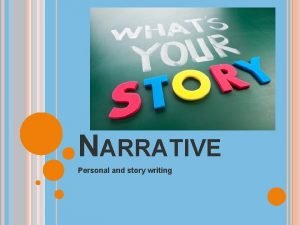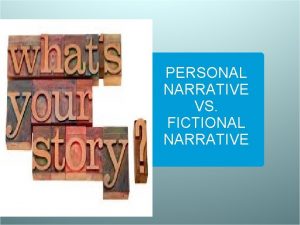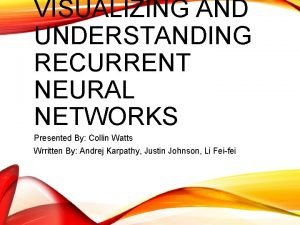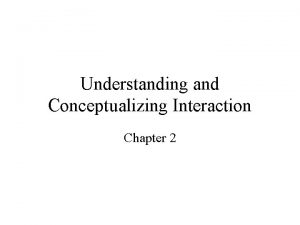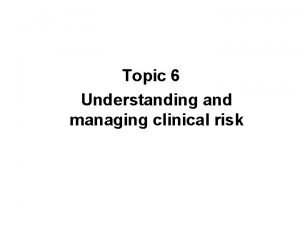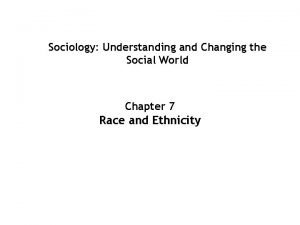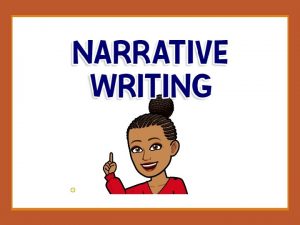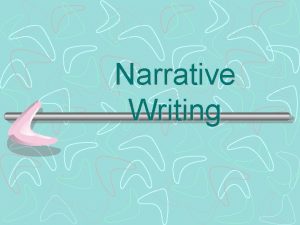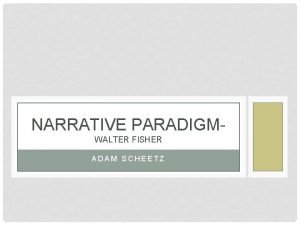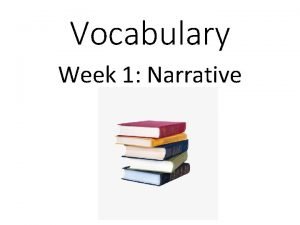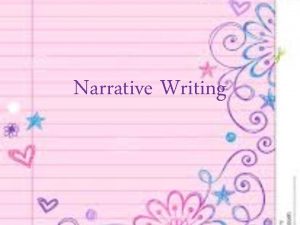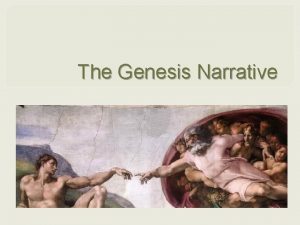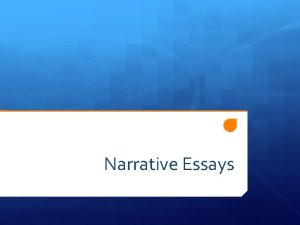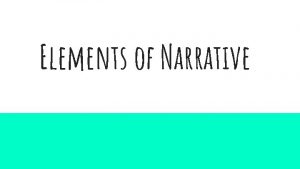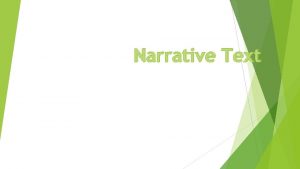Understanding Narrative Story vs Narrative and story are












- Slides: 12

Understanding Narrative

Story vs Narrative and story are NOT the same thing. Story is WHAT happens. Narrative is HOW it happens – how the story and plot are combined. � Story: girl meets boy and fall in love � Plot: HOW the story is told - flashbacks, flashforwards, voiceovers etc. The story and plot combine to form the narrative.

Close reading the text You need to closely ‘read’ the text and identify the various production elements (techniques) used to create the narrative (the WHAT) You need to analyse HOW they work You need to analyse WHY they work

Production Elements Watch out for the following: � Film format (film stock / video / black and white etc. ) � Cinematography � Lighting � Editing � Visual Composition (mise en scene) � Sound � Costume � Acting

Narrative Structure The classic Hollywood narrative structure is the most common and dominant narrative structure. A cause-effect relationship is facilitated by a motivated character who has to overcome obstacles (conflict) and/or effect change to achieve their goal (resolution). Filmmakers occasionally subvert this classic structure by: reversing the cause and effect (i. e. murderer caught at beginning of film rather than end using a flashforward); or offering no resolution. Interesting techniques used in narrative structure include twists, flashbacks and flashforwards.

Narrative Information Film directors decide how and when to give the audience information. This is called the narrative point of view. It may be omniscient (all-knowing) or restricted (for example, one character’s point of view – which could be objective, perceptually or mentally subjective). This POV may alter throughout the film or an audience can be deceived (The Sixth Sense).

Why is the narrative important? Because if you know WHY something is done you might be able to do it yourself, and better, when you create your own media text! PLUS – you’ll acquire skills that mean you won’t be easily fooled by the cheap tricks of text producers.

Editing and montage theory The earliest films had no editing – they were simply shot, developed and screened. http: //www. youtube. com/watch? v=7 LA 6 P_ge 4 Hk (The Lumiere Brothers’ Workers Leaving the Lumiere Factory – 1895)

Editing and montage theory The power of film was realised (Train Arriving At a Station – 1896 – caused members of the audience to scream in fear!) and people start experimenting. Russian, Kuleshov spliced pictures of a man and a bowl of soup and then the same shots of the man with a baby – audiences believed the man expressed different emotions (even though he didn’t)! http: //www. youtube. com/watch? v=4 g. LBXikgh. E 0&feature=r elated

Editing and montage theory The idea of cutting together images was developed by Sergei Eisenstein and is famously shown in the Odessa Steps scene of his 1925 film ‘Battleship Potemkin’. This is where montage was truly born. http: //www. youtube. com/watch? v=DLEE 2 UL_N 7 Q Eisenstein is also famous for his use of visual metaphors in this film where a lion statue, apparently awakening, represents the Russian people rising up in revolt. http: //www. youtube. com/watch? v=29 GXa. Xn. Vd. A 8

And now for some wordy technical stuff…. Semi …. what! Semiotics : the study of signs What we see on film or read in a newspaper is something that purports to be reality – it re-presents reality – and it uses signs (words or pictures) show us that reality. Important theorists…(great to quote for E grade!). � Ferdinand Saussure – semiotics (signifier / signified) � Roland Barthes – denotation / connotation (the creation of mythology – culturally based value systems) � Noam Chomsky – ‘propaganda model’ (the media is a tool for the dissemination of propaganda in an undemocratic way) � Jean Baudrillard – ‘hyperreality’ (signs referring to signs – ‘Disneyland castle’ = fairytale romance – has no ‘real world’ referent)

Semiotics some more. . http: //www. uvm. edu/~tstreete/semiotics_and_ads/
 Antigentest åre
Antigentest åre Narrative vs story
Narrative vs story Narrative vs story
Narrative vs story Fictional personal narrative
Fictional personal narrative Every picture has a story and every story has a moment
Every picture has a story and every story has a moment Visualizing and understanding recurrent networks
Visualizing and understanding recurrent networks Visualizing and understanding convolutional neural networks
Visualizing and understanding convolutional neural networks Sqa art expressive evaluation template
Sqa art expressive evaluation template Sqa understanding standards art and design
Sqa understanding standards art and design Understanding and conceptualizing interaction
Understanding and conceptualizing interaction Understanding and managing clinical risk
Understanding and managing clinical risk Sociology understanding and changing the social world
Sociology understanding and changing the social world Lack of communication between parents and teenager
Lack of communication between parents and teenager

